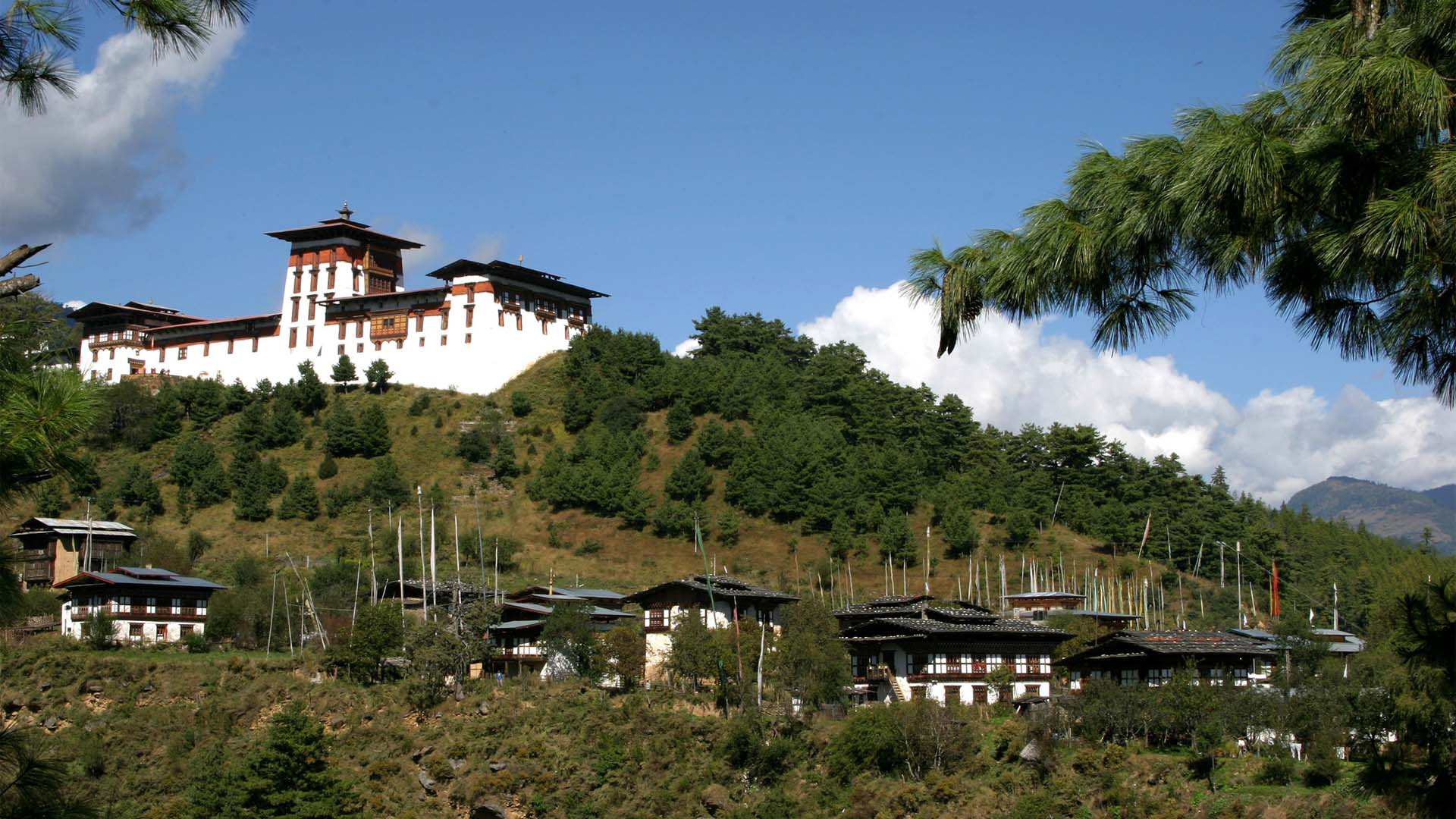Bumthang
Bumthang is the most historic District in Bhutan. With a lot of ancient temples and sacred sites. Bumthang is divided into for Geogs (sub districts) consisting of the mountain valleys of Ura, Chhumey, Tang and Choekhor. Literally, Bumthang directly translates to “beautiful field”. “Bum” is said to be the abbreviation for either “Bumpa”, describing the shape and the nature of the Valley. Bumpa is a vessel for holy water. Or simply “Bum“ meaning Girl. Thang means field or ground. Some say, the place got its name from the construction of the Jambay Lhakhang. Bumthang is considered to be the spiritual heartland of Bhutan. It has its own charms that separates it from other regions. Bumthang is also the traditional home to the great Buddhist teacher and treasure discoverer, Pema Lingpa.Bumthang lies at an altitude of 2,800 meters.
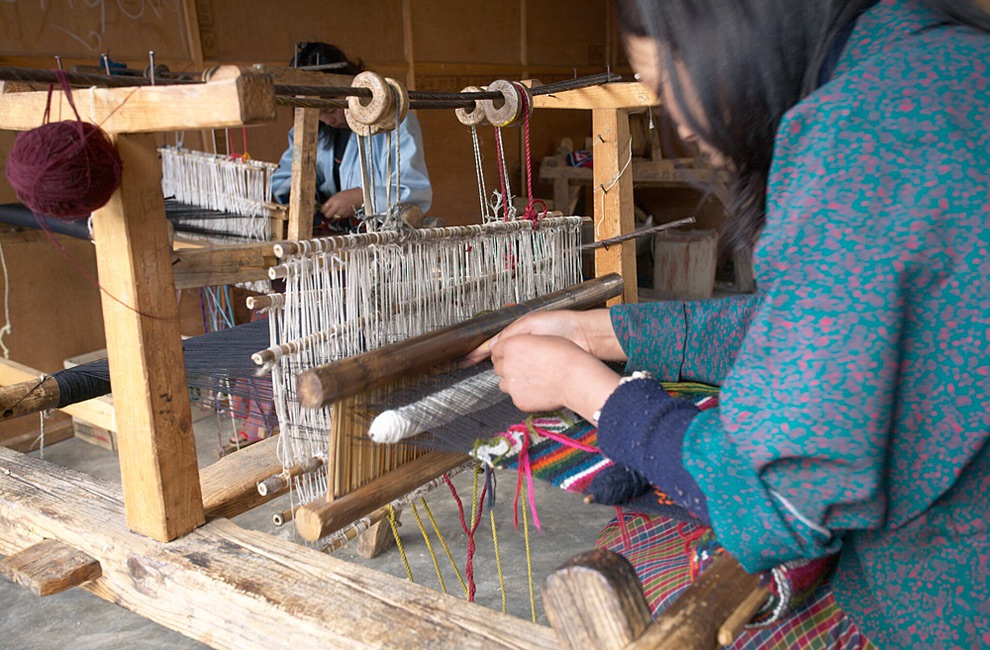
The Yathra Weaving Centre in Chhumey Valley
Yathra is the most famous textile product of Bumthang. The Chumey Valley is known for the beautiful Yathra woven by the locals. Yathra is a hand woven fabric made from the wool of sheep or Yak. The wool is first spun into threads and then dyed before they are woven into Yathra with beautiful flower patterns and colours. The Yathra cloth is made into scarves, jackets, table cloths, bags, etc. Most of the women in this valley, especially in Zungye village earn their lively hood by weaving Yathra which is supplied to various towns in Bhutan. The Yathra weaving centre is located in the Zungye village in Chhumey, around 17 km approximately, before reaching the main town of Bumthang. In this village, there are families, especially ladies who are specialized and engage themselves in weaving Yathra. Every traveller visiting Bumthang gets to see this as the main shop which deals with these products is located on the highway.
Jakar Dzong, Jakar, Bumthang
Literally meaning the Castle of White Bird. Initially the Dzong was constructed in the year 1549 by Great grandfather of the first Zhabdrung, as a monastery. In the year 1646, it was upgraded, after Zhabdrung firmly established his power in Bhutan. The current structure was built in 1667. Jakar Dzong is now the main administrative centre for Bumthang District, the Dzong also houses the regional monk body.
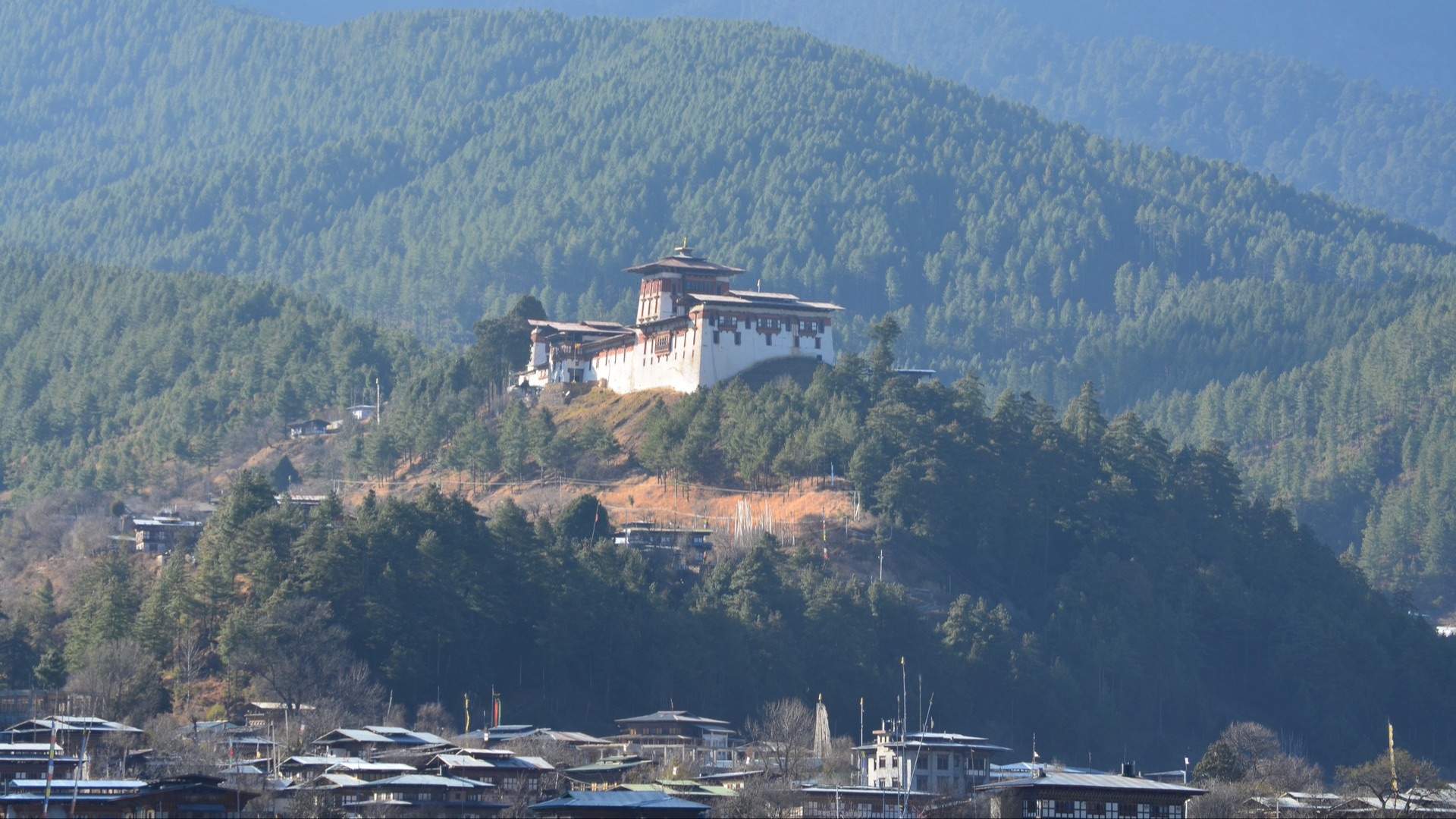
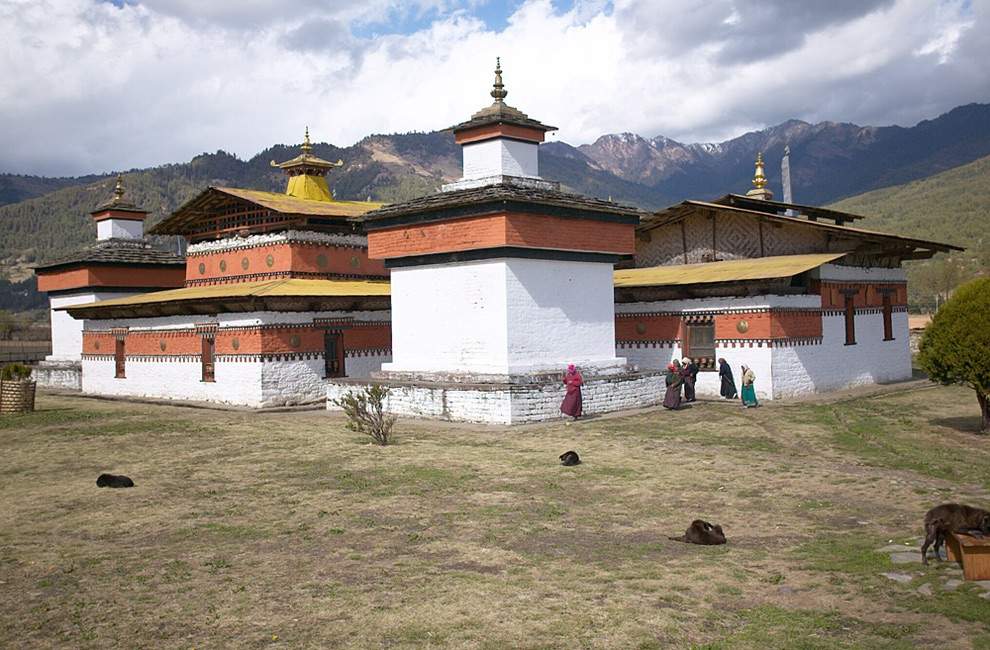
Jambay Lhakhang, Chhoekor, Bumthang
Jambay Lhakhang was built by King Srongsen Gampo of Tibet in the 7th century and is one among the 108 monasteries built by him to subdue evil spirits in the Himalayan Region. The inner shrine with the future Buddha is believed to be more than 1400 years old and the other architectural appearance date back from to early 20th century. In autumn, one of the most spectacular festival, “Jambay Lhakhang Drup” is staged here.
Kurjey Lhakhang, Bumthang
The Kurjey lhakhang was named after the body print of Guru Rinpoche and consists of three temples. The first temple was built in the year 1652 on the rock face, where Guru Padmasambhava meditated in the 8th century. The second temple is considered to be the most holy as it is built on the site of the cave which contains the imprint of the Guru’s body. In the year 1990, Ashi Kesang, the Queen mother built the third temple. All the three temples are surrounded by 108 chorten wall.
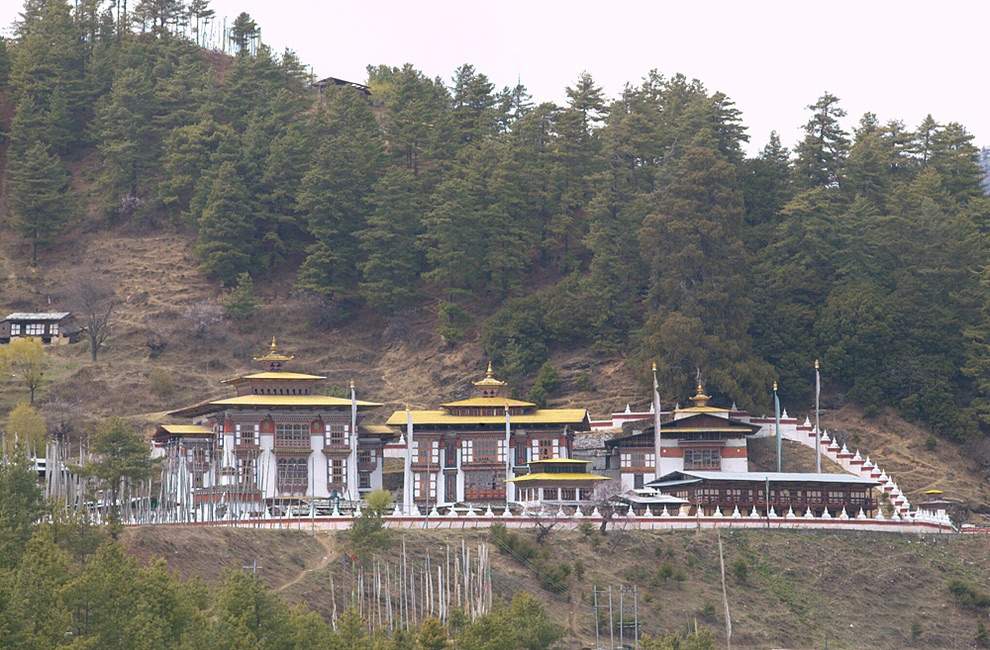
Chakar Lhakhang
Chakar, literally means the Iron Castle. This used to be the palace of the King Sindhu Raja and the original palace is said to be made of iron. The lhakhang looks like an ordinary village house. The lhakhang was rebuilt in 14th century by Dorji Lingpa, a Buddhist saint.
Wangdichholing Palace, Bumthang
The Wangdichholing palae is located along the Chamkhar Chhu in Bumthang. The Palace was constructed as a private residence for Trongsa Penlop, Jigme Namgyal in the year 1857. The first King of Bhutan, Ugyen Wangchuck was born in this Palace. In the early 20th century, the palace became the seat of National power which housed the King’s office and the courts until it was moved to Paro in the year 1950. The Royal Family followed in the year 1960. Since then the Palace has been remaining empty. Since 2004 a small monk body consisting of 30 monks has been occupying a small portion of the Palace.
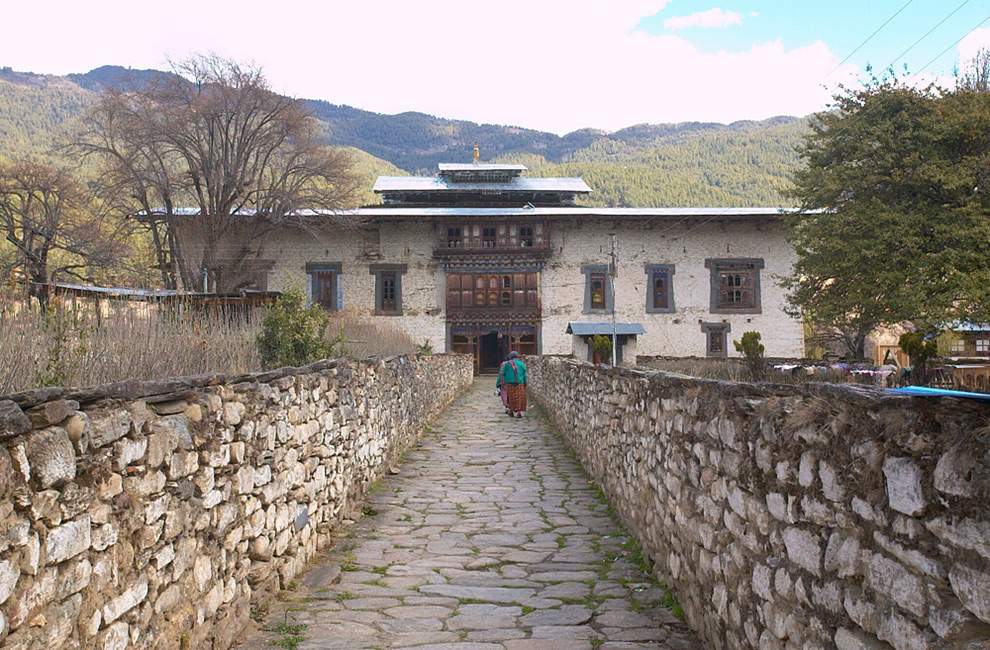
Tamshing Lhakhang
Tamshing lhakhang literally means the Temple of the good message. It was established in 1501 by Terton Pema Lingpa and has ancient religious paintings such as 1000 Buddha and 21 ‘Taras’ (female form of Bodhisattva). Tamshing Phala Chhoepa, an annual festival, in which mask dances are performed, some of which are unique to Tamshing, is held here in this lhakhang.
Kenshogsum Lhakhang
This is a 6th century temple which contained a large bell. It is said that when this bell was rung, it could be heard all the way in Lhasa in Tibet. In the 17th century a Tibetan Army tried to steal this bell, however, the bell being too heavy, it was dropped and cracked. The bell is now displayed in the National Museum at Paro. The temple was later renovated in 1995, which gives it current fresh look.
Lhodrak Kharchu Dratshang
The Kharchu Dratshang was founded by Namkhai Nyingpo Rinpoche in 1984. Namkhai Nyingpo Rinpoche was recognised as the reincarnation of a Tibetan lama (whose spiritual lineage dates back to the nearest disciples of the great 9th century Master) by H.H. the 14th Dalai Lama and H.H. 16th Karmapa at a very young age. Since its establishment the monastery has considerably developed with increase in number of monks and has become a part of an extensive effort to preserve and revitalize Tibetan culture.
Thangbi Lhakhang
Thangbi Lhakhang is located in Thangbi village of Bumthang. It is one of the historically significant temples in Bumthang and was founded by the 4th Shamar Rinpoche, Chhoki Drakpa (the Red Hat Karmapa: 1453-1524) in the year 1470. The lhakhang is approximately 45 minutes of walk from the road. The temple consists of two sanctuaries and a temple of terrifying deities. The Statues of the past, present and the future Buddha and three other clay statues dating back to 15th century, occupies the ground floor. It also contains two remarkable statues of the Guru Rinpoche in the entrance. The Thangbi Mani festival is celebrated in this lhakhang. Thangbi Mani (festival) showcases a display of rich tradition and celebrates the cultural heritage of the Thangbi Lhakhang, annually from 14th to the 17th of the eighth month of the Bhutanese calendar. The festival is organized by the people from the villages of Thangbi, Goling and Kharsath. The first day of the festival comes to end with the performance of the burning ceremony (Ginsek) which is believed to drive away and subdue evil spirits. Another interesting event of the festival is the Mewang Ceremony (Fire Blessing). It is performed in an open ground where spectators jump over flames to get purified from their sins and evil deed while the monks perform the purification rituals.
Nimalung Dratshang
Located in Chummey Valley in Bumthang, Nimalung Dratshang is at an approximately 15 minutes’ drive from the road that branches off from Chummey Village. The Dratshang was co-founded Dasho Gonpo Dorji and Doring Trulku Jamyang Kunzang, the third mind reincarnation of Terton Jigme Lingpa in the year 1935. During the visit of Doring Tulku to Bhutan, he met Dasho Gonpo Dorji during the funeral ceremonies of Dasho Jamyang, the father-in-law of the Second King Jigme Wangchuck and immediately thought of laying the foundation of a Lhakhang and along with Doring Trulku he decided to open a monastic institution to uphold the school of Buddhism enriched by Kuenkhen Longchen and Jigme Lingpa. This is a two storied temple decorated with murals of the Nyingmapa and Drukpa traditions and its main relic is the statue of Guru Rinpochhe. There are also paintings of Guru Rinpoche and his disciples, the lineage of Terton Pema Lingpa, and several masters affiliated with the monastery. Nimalung tshechu is one of the most important festivals held at the Lhakhang. During the festival a nine meters high and twelve meters wide Guru Rinpoche Thongdrol (large Scroll Painting) is unfurled. The Thongdrol was donated by Lopen Pemala was consecrated in June 1994 in the presence of a large crowd of villagers by Lhalung Thuksey Rinpoche, the mind reincarnation of Pema Lingpa. A series of mask dances are also performed during the festival.
Ngaa Lhakhang, Chhoekhor, Bumthang
Ngaa Lhakhang is located in the Nalakhar Village in the Chhoekhor Valley of Bumthang. Nalakhar is one of the less visited beautiful small villages in Bumthang. A feeder road connects the village and it takes approximately 1 Hr to reach the village. Nalakhar Tshechu is celebrated in Ngaa Lhakhang in Nalakhar village. The present temple was built in the 15th century by Lama Namkha Samdup, a contemporary of Pema Lingpa, in the site visited by the Guru Rinpoche.
Kunzangdrak Goemba, Tang
The lhakhang is one of the most important sites related to Terteon Pema Lingpa, the great treasure discoverer in Bhutan. The Goemba was constructed by Pema Lingpa in 1488. Most of the sacred relics of Terteon Pema Lingpa is kept in this Goemba. This includes the gilded stone bearing his footprint. The lhakhang is a two hours walk above Chel in Tang Valley.
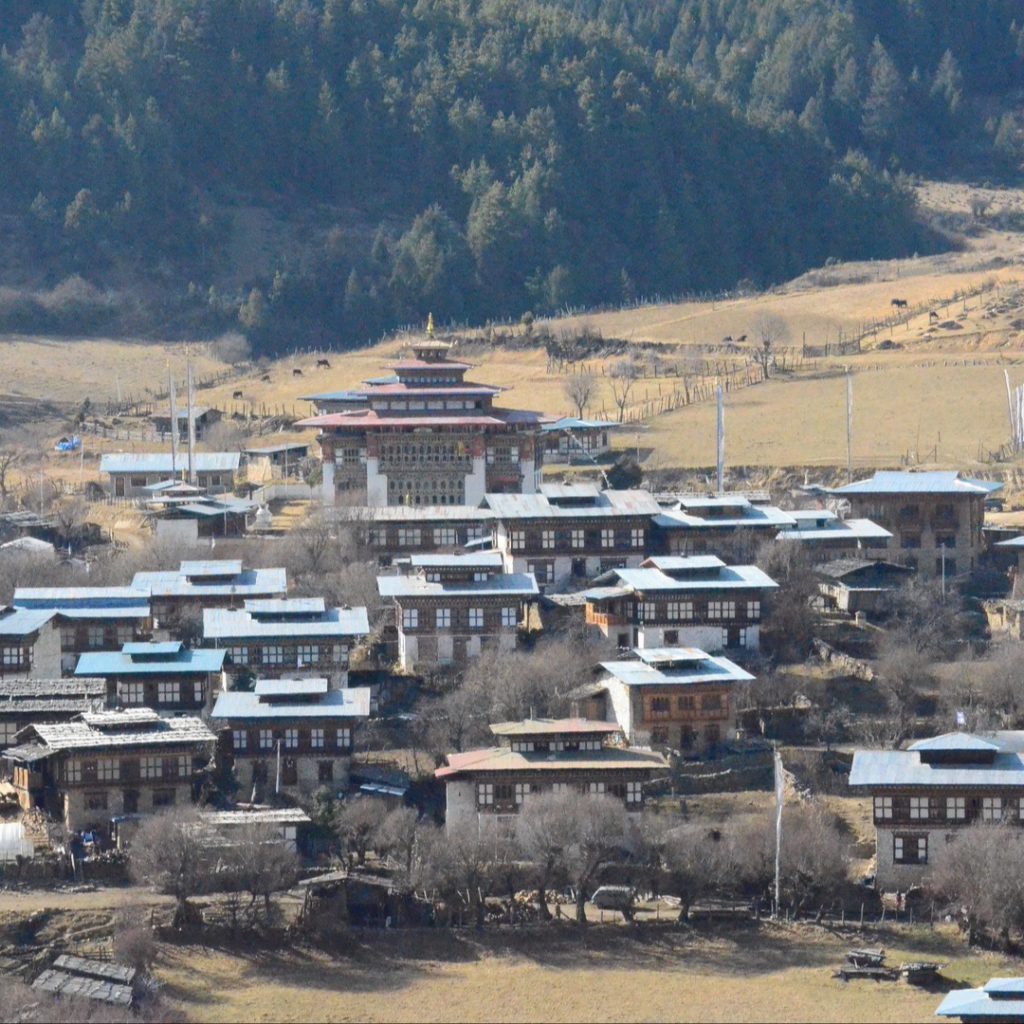
Ura Valley, Bumthang
50 Km towards the eastern Dzongkhags from the main town of Bumthang is the Ura Valley. It is approximately 1.5 hour drive to reach the Ura Valley. An amazingly open countryside with large pastures and occasional running into forest, the drive to Ura Valley can be a great fun. The route crosses Ura la pass (3,600m) with a magnificent view of Mount. Gangkar Puensum. With clustered houses, the villages in Ura is quite unique in Bhutan. A new temple dedicated to Guru Rinpoche was inaugurated in 1986. The temple contains a huge statue of the master and remarkable paintings of the cycle of his teachings. The Ura Yakchhoe festival is celebrated in Ura Valley in Bumthang. The festival is held annually in the month of May. In this festival a sacred and an important relic is put on display for the people to receive blessings. Legend has it that a long time back an old woman, while sitting outside her house had a visitor. The visitor was a lama who asked her for a glass of water. The old lady went inside her house to get the water and when she came out with water, the lama had vanished leaving behind a sack. Out of curiosity she checked the bag and found a statue, which is now being displayed annually during the Ura Yakchhoe. This relic has been passed on from generations and is now owned by the descendants of the woman. Ura has transformed from a marginal community to prosperous valley since the last 25 years.
Mebartsho (The Burning Lake), Tang valley
A wide spot on the Tang Chhu River is considered to be one of the greatest pilgrimage sites of Bhutan. The Mebar Tsho is more of gorge than a lake and it take approximately 30 minutes to reach there from Chamkhar town. Legend has it that in the early 1475 the Saint Pema Lingpa, in direction of the Guru Rinpoche during his dreams, plunged into the river with a burning lamp and declared: “If I am a demon, I shall die! If I am not, and I am the true spiritual son of Guru Rinpoche, this lamp will continue to burn and I will recover hidden treasures!” And he came out of the lake with the lamp still burning. This is how the lake got its name. The extensive array of prayer flags and the small clay offerings called ‘Tse Tsa’ in rock niches indicates the importance of this site.
Tang Rimochen Lhakhang, Tang valley
The Lhakhang is located in the Tang Valley in a sacred place of Guru Rinpoche. In front of the temple is a rock which bears the body print of the Guru Rinpoche and two Khandoms (female celestial being). This site got its name from the tiger stripe markings on the cliff. There are two large boulders nearby the temple, which is said to be male and female Jachungs (garudas). Below the temple is the foot prints of the Guru and his consorts Mandarava and Yeshe Chhogyal.
Peseling Geomba, Bumthang
The Pelseling Goempa is a half day trek (3-4 hours). It is a sacred monastery with rich historic values and is situated on a steep mountain. Travellers come across breath-taking views of the valley and large species of flora and fauna on the way to the Goemba. There is also a beautiful meadow on the way.
Ugyenchholing Palace, Tang Valley
The Palace is another attraction in the Tang Valley. The Palace now houses the family Museum and was restored in the 19th century. The Palace contains the historic items of Tshokey Dorji (the then Trongsa Penlop (Governor)) and his household.
Prakar Lhakhang, Chhumey
Prakar Lhakhang is located in Prakar village in Chhummey gewog in Bumthang. Prakar Duchhoed is the most imported festival celebrated in this temple. Several kinds of mask dances are performed during the festival. The festival is celebrated to honor Lama Thukse Dawa, one of the sons of the 15th century Buddhist master, Terton Pema Lingpa. Lama Thukse Dawa who was one of the greatest Buddhist masters to be ever born in Bhutan.

